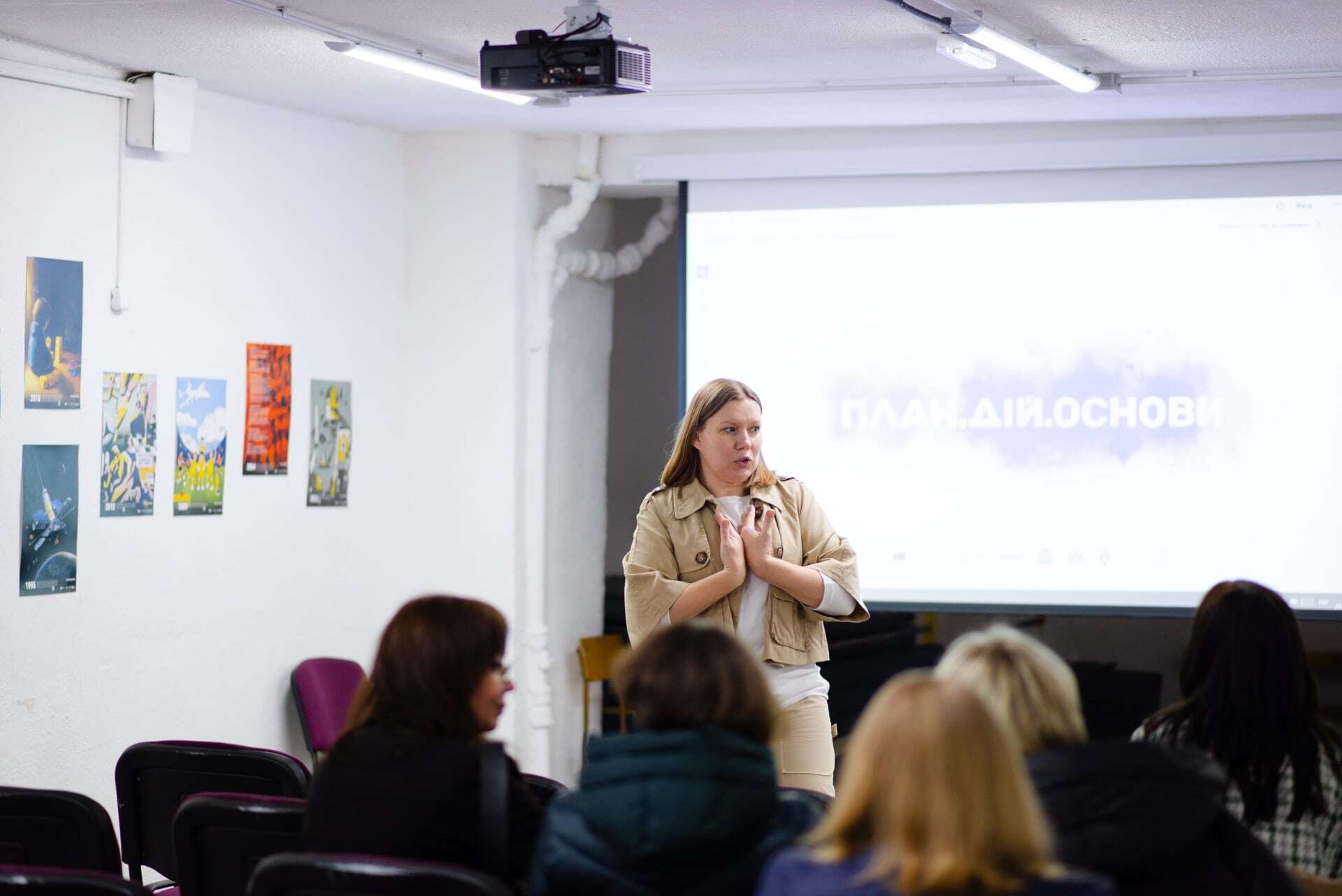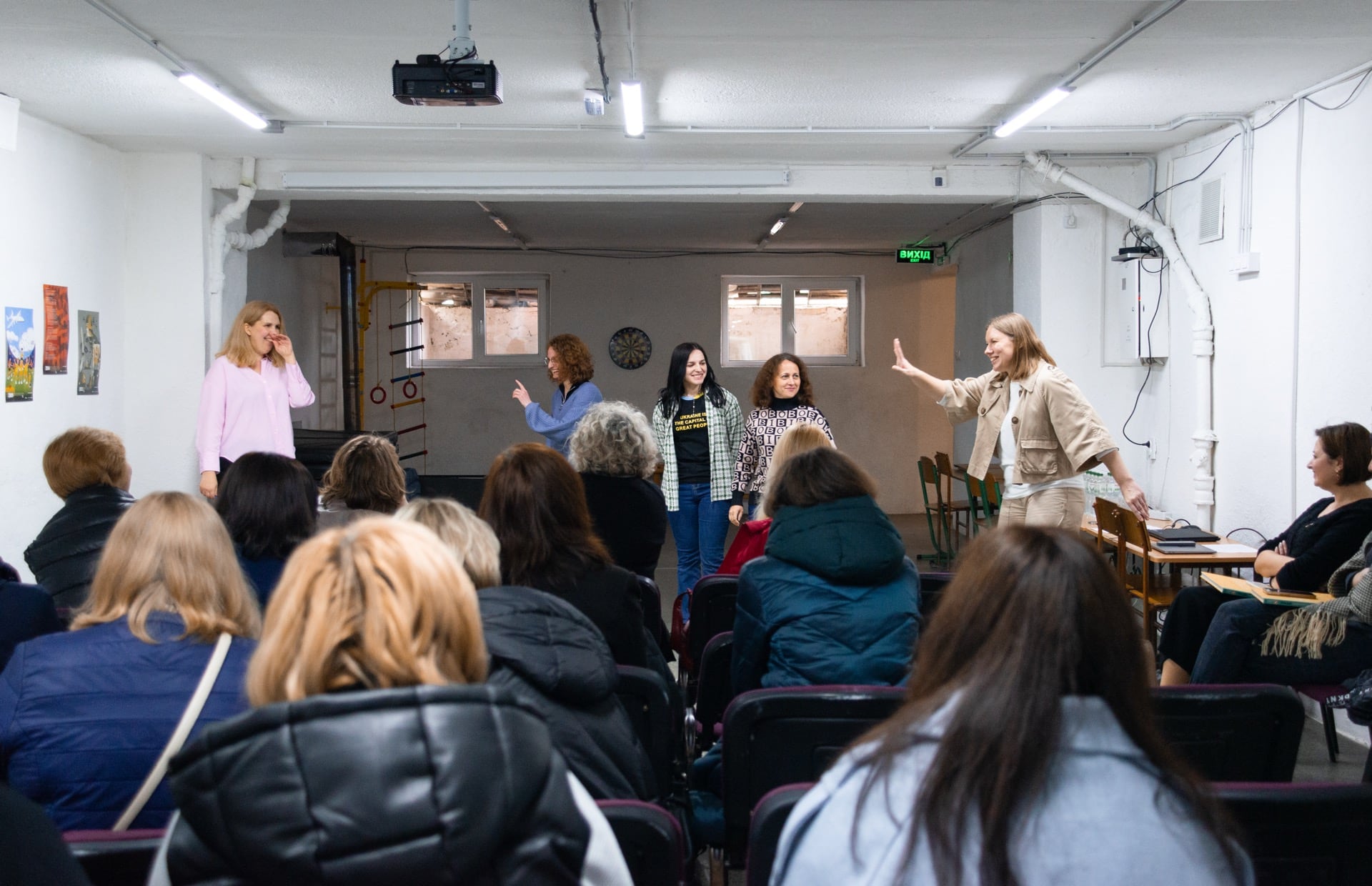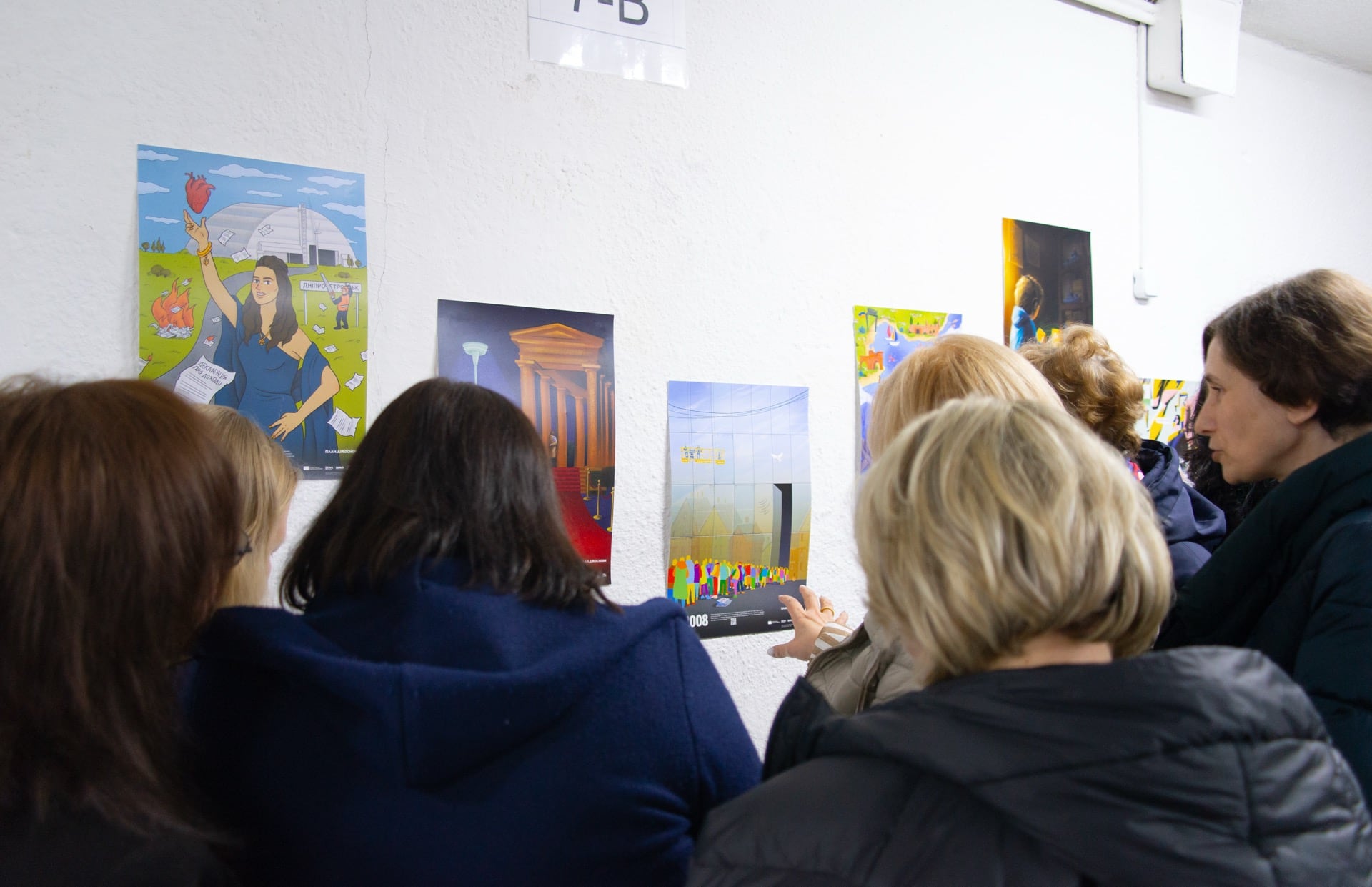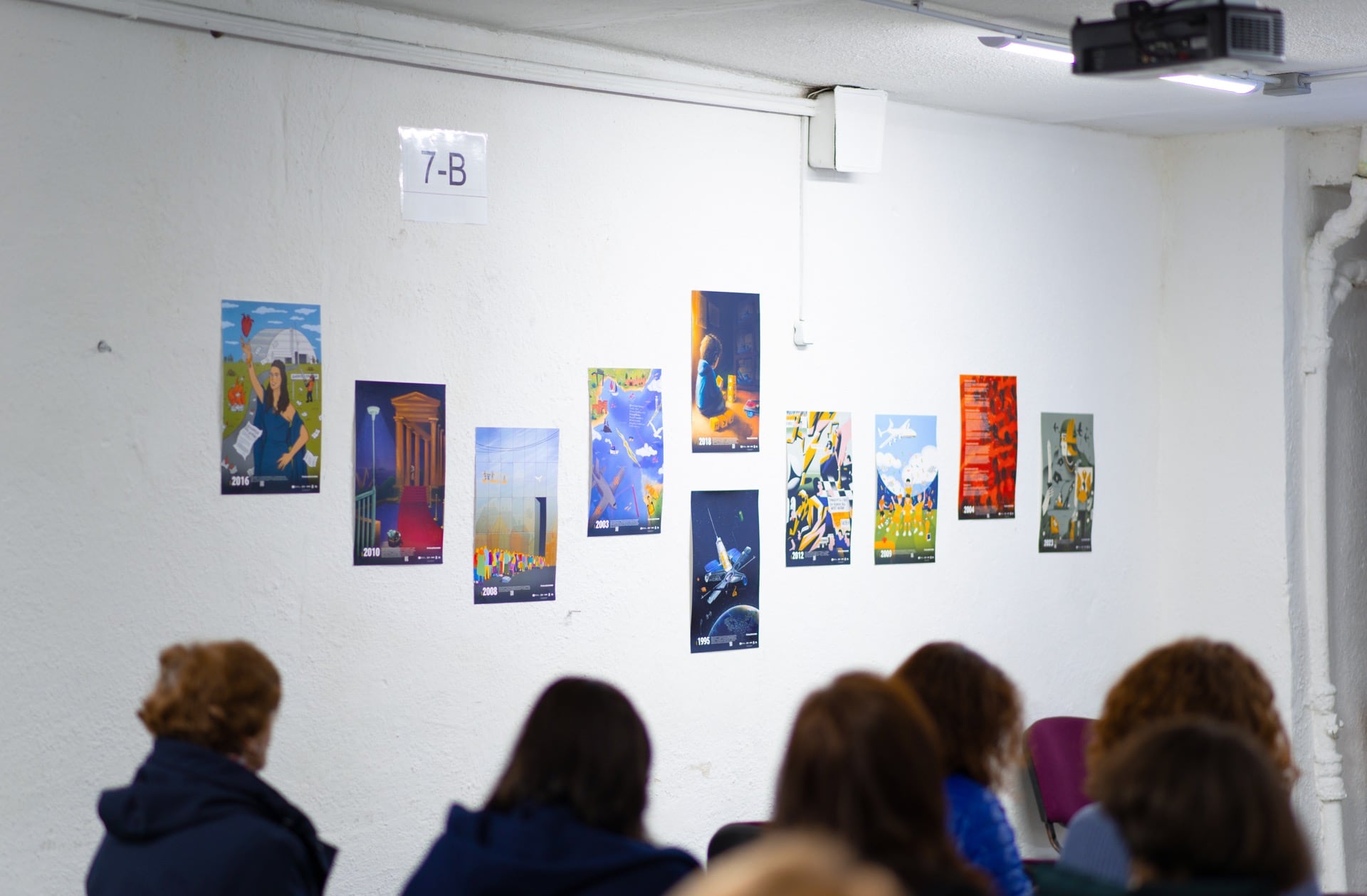ZMINA: Rebuilding - Plan.Action.Fundamentals: Engaging Ukraine’s Youth in Post-War Reconstruction

This spring, Plan.Action.Fundamentals was launched as an educational initiative aimed at students in grades 8-11 and their teachers, focusing on involving them in Ukraine's rebuilding efforts. The program seeks to address immediate needs while preparing for future recovery, empowering young people with the necessary knowledge and skills to contribute meaningfully. Through creative projects, students are transforming their schools into centers of community strength and innovation.
We spoke to the organizing team about the challenges of engaging teenagers in such critical work during wartime, the importance of proactive education, and the future aspirations for Plan.Action.Fundamentals.

Why did you choose to focus on teenagers and their interaction with contemporary history? How did you determine this would be a key area for developing resilience during wartime?
All our projects have always focused on working with teenagers, sometimes through educators, sometimes directly. Most projects help them develop an engineering mindset. Recently, the focus has been on self-reliance, which is a component of resilience.
You might wonder, what do engineering and history have in common? Doers say, “Do it yourself” or “Let's do it together,” daring to bring ideas to life. Similarly, when we create the positive history of our country—individually or better yet, collectively—we solve small and large problems, find and implement opportunities, and replace bad practices with better ones.
If we don't do this, history still happens, but not in a place that is free, safe, and comfortable.
We realized it wasn't enough to provide teenagers with knowledge and skills alone. To get some actual results, they need to understand the context well. History provides that context. Altogether, this allows students to look more confidently into the future, shaping their own comprehensive and dynamic vision for the development and recovery of the country.
We presented the history of modern Ukraine graphically—one poster for one year. A team of fourteen illustrators and designers worked on them: Anastasiia Starko, Alina Kropachova, Albina Kolesnichenko, Olena Kyrylchuk, Hrytsia Erde, Nataliia Shulha, Yaroslav Yakovlev, Kateryna Didyk, Iryna Morykvas, Liudmyla Panasenko, Maryna Dovhanych, Yulia Zolotova, Roksolana Mokhnach, and Mykola Kolesnyk.
We also prepared methodological recommendations to help educators build multi- and interdisciplinary discussions about the events and processes depicted on the posters.

You selected students from grades 8–11 and teachers of various subjects as the target group for the workshops. Was there interest from younger students or perhaps their parents? If so, how did you address this interest?
Let me provide some background, as it’s crucial for explaining the workshop. The idea for a series of graphic stories was inspired by our previous work with a teenage team. Together with experts from Peremebli, we helped students from Voznesensk School No. 5 set up a shelter. From analyzing the space and their needs while in it, to sketches, self-made prototypes, and a series of transformer shelves. Part of transforming the space was expanding the functions it could serve, as teachers usually manage to resume lessons only partially. But for a significant amount of time, students just have to wait the attacks out.
A shelter is a place where the awareness of events intensifies, but it can also be a place for informal dialogues about resilience and recovery. Such dialogues occasionally lead to specific actions—student projects and initiatives as expressions of resilience.
Through these discussions and projects, students from grades 8-11 can explore different fields, and better understand what changes they would like to make now or in the future, who they want to become, and what profession to choose.
Therefore, the workshop was conducted with high schoolers to test our hypotheses. We expect that analyzing history will encourage senior students to initiate various projects. However, younger students can also participate. Teachers can select events to discuss that are more understandable for younger students and even carry out manageable projects with them.
During the training sessions for educators, we also received requests to adapt the recommendations for students with special educational needs, which we plan to do.
You combined artistic and educational practices to develop a series of graphic stories about significant events in independent Ukraine. How did you integrate these practices? Could you explain how these graphic stories were created and used in the project?
The series of thirty-three graphic stories and the accompanying methodological recommendations are the project’s main outcomes. The workshop and training sessions helped us in developing them. During the workshop, it was important to test our approach with students, and during the training sessions, we introduced the concept to educators and gathered feedback to refine the recommendations. This allowed us to consider the specifics of working in different shelters and incorporate ideas from the teachers themselves.
One hundred schools have already received printed poster sets. Other schools can download the posters from the website and print them locally in digital printing labs.

Are there any specific results that were achieved through this project?
In most educational institutions, the direct work with the posters will start in September when students return to schools and, unfortunately, to shelters. However, the posters can also be part of classroom, library, or school hub decorations. Teachers typically spend the end of summer preparing the school for the academic year and can place the posters in the facilities. In some schools, discussions will start earlier during summer catch-up sessions to make up for lost educational time.
Through the posters, we highlighted 193 events and processes that have defined our path, things we are proud of, what gave us strength, but also things we feel ashamed of or now recognize as mistakes.
We also offer students at least 100 topics for in-depth analysis and the initiation of their own projects.
As we understand, you developed methodological guidelines for teachers on how to initiate and moderate dialogues about post-war reconstruction in Ukraine. Could you elaborate on these guidelines and how educators can use them?
Certainly, the discussions cover events of varying scales. We emphasize in the guidelines that students should understand that global events impact the local level and vice versa.
The reconstruction process is complex and not limited to construction; we can prepare for it now by gaining new knowledge and skills, practicing equality, and caring for each other's mental health.
For instance, creating an inclusive public space is essential, but unless we stop discriminating against people with disabilities, they won’t fully benefit from it. A 2023 national sociological study in Ukraine found that 71% of respondents feel pity towards people with disabilities.
To elaborate more specifically, as a result of shelling, many buildings have been damaged. How do we decide which ones should be rebuilt, reconstructed, or restored? There are numerous instances where developers, exploiting the condition of historically valuable buildings, simply demolished them to make way for another shopping center. We suggest that teachers and students explore the topic of architectural heritage using the example of 1992 when the construction of Kyiv’s television center Olivets, a prominent example of modernist architecture, was completed.
Given that teachers of various subjects are in shelters, the discussions can cover a broad range of topics. For example, they might explore the history of modernism in our country and Europe and discuss why modernism needs protection rather than destruction. We can illustrate this with the efforts to protect the Tarelka and Flowers of Ukraine buildings in Kyiv.
If there is a similar architectural object nearby that needs attention, students can find out if the local authorities or community have a plan for its preservation. The next step could be consulting with experts, such as architects, urbanists, historians, and art historians, and launching an information campaign. We hope that as they grow older, students will continue to care for the architectural identity of their cities.

To give you some other examples, 1995 and 1999 saw the launch of Sich-1 and Zenit-3SL. Other years marked by aerospace successes or failures provide an opportunity to discuss the development of the aerospace industry—what we have and what we lack. Is there a problem among these that teenagers can help solve? We hope such discussions lead to the realization that the country lacks even basic aerospace education centers. These centers could be created in schools: aerospace clubs, rocket modeling clubs, etc. Student councils can advocate for this need to the school administration, educational authorities, and local government.
Another example is the 2012 law banning smoking in public spaces. Students can analyze how well this law is being followed in their community. If necessary, they can run an information or advocacy campaign. Additionally, students can learn about the stages of the fight against smoking in Ukraine, from local to national initiatives and decisions, as well as the tobacco lobby. They can analyze why smoking leads to early loss of productivity and find out that social payments and treatment for smokers' diseases cost the state more than 90 billion hryvnias (Editor’s note: over 2 billion euros) annually. These funds could be directed toward development. Students can calculate which other problems could be solved with this money or what opportunities could be created.
Each year has enough events to analyze, which can teach us to create a better, more conscious new history.
How has this project impacted the educational experience of students during wartime? What changes have you observed in their understanding and interaction with history?
To reiterate, the workshop was a stage in developing the posters and methodological materials. We conducted several discussions and analyzed their dynamics to better understand which formats for exploring topics to propose. For example, in the methodological recommendations, we suggest creating their own posters, and collages, collecting testimonies from participants in various events, e.g., from parents, or teachers, gathering photos, conducting interviews, etc. We will learn about the impact of working with the posters on students throughout the next academic year. Currently, we have teachers' expectations, shared with us after participating in the training sessions.
For instance, Olena Kandyba, a teacher from Lyceum No. 4 of the Ladyzhyn City Council in Vinnytsia Oblast, shared that they plan to use the posters as a basis for meetings with parents, during which they will exchange memories of events from the year and students will share their knowledge about that year. They are considering creating videos or collages and installations based on the posters' materials, which she sees as excellent material for cross-curricular connections in lessons.
Nataliia Mavdryk from Mar'ie-Dmytrivskyi Lyceum in Dnipropetrovsk Oblast believes that by studying the presented historical events and their context, students can analyze information and draw their conclusions about the significance of these events for the present and future of Ukraine. This promotes a deeper understanding of history and fosters a sense of responsibility for the country's reconstruction and development. According to her, the Plan.Action.Fundamentals posters not only provide students with knowledge but also help them form an emotional connection to their country's history. This can inspire further study and stimulate interest in participating in civic initiatives aimed at rebuilding and improving life in Ukraine.
Overall, teachers feel that working with these posters is essential as it supports not only the transfer of knowledge but also community building and the educational process, even under challenging circumstances.

For the workshop, you chose Voznesensk School No. 5, which, at the beginning of the full-scale Russian invasion in 2022, served as a shelter for residents during artillery and airstrikes. How did the historical significance of this location impact the participants and the workshop results? Did it align with your educational goals for the project?
We didn't notice such a connection, to be honest. As I mentioned earlier, we chose this school because it was important for us to conduct the workshop where students had already contemplated the shelter space, its possibilities for design, additional functions, and how they could spend time there.
What are your long-term goals for the Plan.Action.Fundamentals project? How do you plan to maintain and expand its impact after the initial implementation?
Since educators will be most interested in preparing shelters and integrating work with the posters into the curriculum at the beginning of the school year, we plan to intensify our information campaign during this period. We aim to organize a poster exhibition in one or more cities in Ukraine, dedicating it to Independence Day. We also plan to hold several more offline training sessions for educators and participate in educational forums throughout the next school year to spread the practice more actively. We want to collaborate with organizations involved in developing school shelter projects and their content, so including the posters in their recommendations is crucial.
We have an agreement with educators who have already received the poster sets to exchange impressions and results throughout the year. We plan to highlight best practices to generate further interest in the project.

What motivates your team to work on this project? How has your own experience influenced the design and goals of the project?
Our vision is a generation of Ukrainians who are optimistic about finding solutions and confidence in their ability to achieve them.
On February 22, 2022, we concluded our Strategic Session with a homework assignment to finalize our vision statement. We were expanding our scope of activities and had many ideas on how to articulate what drives us in one sentence. However, we felt the need for each of us to reflect on these options individually.
We revisited the formulation only in March. At that time, we were already thinking about how our programs would change. I had been reading a lot about engineers working in critical conditions and came across a phrase that resonated with me: “It's great to be an engineer because you know how to solve problems, which makes you feel more confident.” Of course, this wasn’t about global issues like war, but this phrase gave me confidence that we would manage. That's how our vision came to be.
When planning new projects, we consider whether they bring us closer to that future and whether our educational formats reinforce each other.
What I find particularly valuable about this project is its multifaceted nature and the numerous opportunities it opens up for working with history—not as mere knowledge of the past but as a tool for shaping the future. It makes the phrase “learning the lessons of history” very practical.
Author: Mariia Akhromieieva
ZMINA: Rebuilding is a project co-funded by the EU Creative Europe Programme under a dedicated call for proposals to support Ukrainian displaced people and the Ukrainian Cultural and Creative Sectors. The project is a cooperation between IZOLYATSIA (UA), Trans Europe Halles (SE) and Malý Berlín (SK).